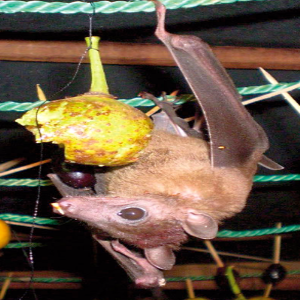Bat flies: source of supplement nutrients for an endemic Malagasy fruit bat

All claims expressed in this article are solely those of the authors and do not necessarily represent those of their affiliated organizations, or those of the publisher, the editors and the reviewers. Any product that may be evaluated in this article or claim that may be made by its manufacturer is not guaranteed or endorsed by the publisher.
Accepted: 23 August 2022
Authors
Among frugivorous vertebrates, the nutritional composition of consumed fruits often needs supplementing by other food types, such as leaves, pollen or invertebrates, to meet dietary requirements. The endemic Malagasy fruit bat, Rousettus madagascariensis (Pteropodidae), actively feeds on their dipteran fly ectoparasites, principally of the family Nycteribiidae and Streblidae, during grooming activities. Since bat flies take blood meals from their hosts, the consumption of these flies by bats might represent a mechanism of recycling and reducing the loss of important nutritional components, such as minerals or proteins and fatty acids. The contribution of these ectoparasites to the diet of R. madagascariensis is 4–10% of the daily protein requirements. This is an important proportion for a species considered to be exclusively frugivorous.
Supporting Agencies
Association Vahatra, Helmsley Charitable TrustHow to Cite

This work is licensed under a Creative Commons Attribution-NonCommercial 4.0 International License.
PAGEPress has chosen to apply the Creative Commons Attribution NonCommercial 4.0 International License (CC BY-NC 4.0) to all manuscripts to be published.







